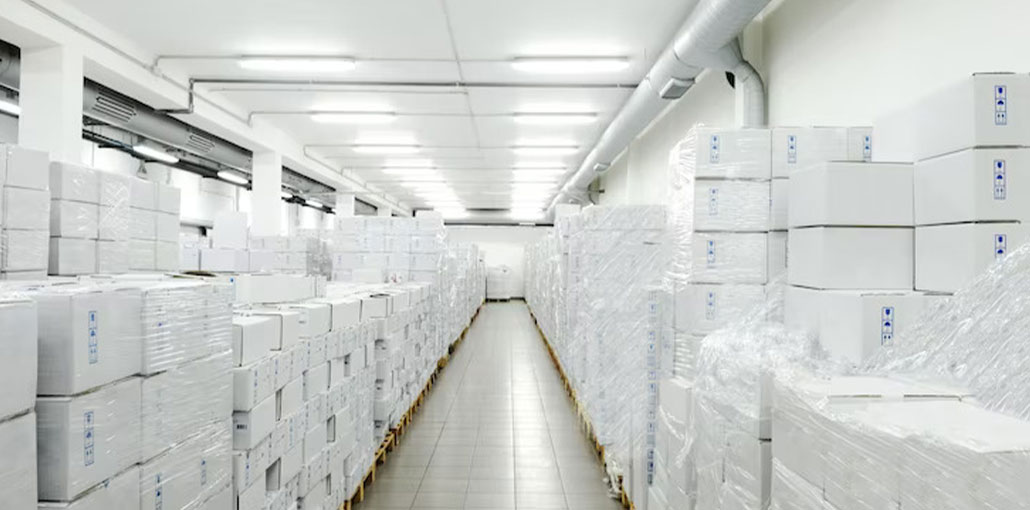What is Cold Chain Logistics?
Cold chain logistics refers to the management of temperature-sensitive products as they are transported and stored along the supply chain. This includes maintaining a specific temperature range, monitoring and tracking the products, and ensuring proper handling and storage to prevent spoilage or damage.
Cold chain management will be required for any product that is known to be perishable or has been labeled as such. This includes foods such as meat, seafood, and medical supplies.
While the idea of transportation is a relatively new concept, the transportation of temperature-sensitive products actually dates back to the late 1700s, when ice was used by the British to keep fish from spoiling. It was also used for transporting perishables in the late 1800s. Dairy products were moved from rural areas to urban areas in order to be sold. Due to a shortage of European meat production, South America sent frozen meat to France, Australia, and New Zealand. Global trade has always been and will remain a major focus of cold chain technology.
Many moving parts are involved in cold chain logistics. Here are some of the components:
- Cold Storage – These are facilities that hold goods and products until they can be shipped.
- Cooling system – A system that brings food up to the right temperature and keeps it there throughout all aspects of the supply chain including storage and transport.
- Cold transport – Ensures that goods are kept at a stable temperature and humidity level
- Cold Processing – Facilities that allow goods to be processed with sanitation in mind.
- Cold distribution- Loading boxes, crates, or pallets to distribute goods.
Also read: How to Use IoT in the Logistics Industry
Cold Chain Technologies
Cold chain transport relies on many methods to maintain goods at the right temperatures. The length of transportation, the size, and the seasonality of the package shipment all influence which method is chosen.
- Gel packs – often used to ship pharmaceuticals and medical supplies.
- Dry Ice – Keeps goods frozen for long periods of time. Useful for food, pharmaceuticals, and dangerous goods. When in contact with air, sublimates instead of melting.
- Liquid Nitrogen – This liquid nitrogen is used primarily for transporting biological cargo (organs and tissues). Extremely cold keeps items frozen longer.
- Eutectic plates – Also known as cold plates, these plates can be used in place of gel packs.
- Reefers – A temperature-controlled, insulated van, semi, truck, or standard ISO container. Allows for temperature-controlled air circulation.
- Quilts – Insulated quilts are used to wrap freight or place it over it. They keep the temperature constant so that frozen items can remain frozen longer.
Cold Chain Standards & Regulations
Federal regulators such as the US Customs, IATA (International Air Transport Association), TSA (Transport Security Administration), Federal Drug and Food Administrations (FDA), and the Department of Transportation (DOT), have established standards and requirements for cold-chain logistics. These standards are in place to ensure that products are safely shipped. Each company has its own minimum requirements for products with respect to temperature, timing, and packaging. Shipping companies set their own quality standards, in addition to the federal industry regulations established by major institutions.
Some regulatory considerations include:
- Stability of product
- Packaging
- Transport
- Monitoring
- Temperature minimums
Also read: Supply Chain Planning: Definition, Process and Benefits
Common Cold Chain Management Questions
Freight shipments can be affected by common cold supply chain management problems. These potential issues are often well-known to drivers and they will try their best to avoid them.
- Product quality issues – Food items and products can have quality problems from the beginning. Before packaging and loading, it is important to properly clean, sort, and disinfect.
- Inadequate packaging – Proper packaging is essential to avoid contamination and transport-related damages. Airflow can also be a problem.
- Lack of proper documentation – It is essential that all steps in cold supply chain management are well-documented. This is particularly true for transit where data loggers can record storage temperatures and conditions to help prevent poor conditions from spoiling a load.
- Shipment/transport delays – Delays are a problem for all shippers, but they can be especially detrimental when it comes to cold chain logistics. Cold chain technology is very time-sensitive.
- Temperature variations and/or disruptions in climate – control can pose a problem for cold chain logistics. This can be caused by multiple deliveries (meaning that doors open and close frequently), improper pre-cooling, loading food from the fields, extreme weather, or other conditions such as faulty cooling devices, transports, or cooling systems.
Conclusion
In conclusion, cold chain logistics is a critical component of many industries, particularly those involving perishable goods such as food, pharmaceuticals, and vaccines. Proper management of temperature control and monitoring can ensure the quality and safety of these products as they move through the supply chain, ultimately benefiting consumers and patients.










Leave a comment